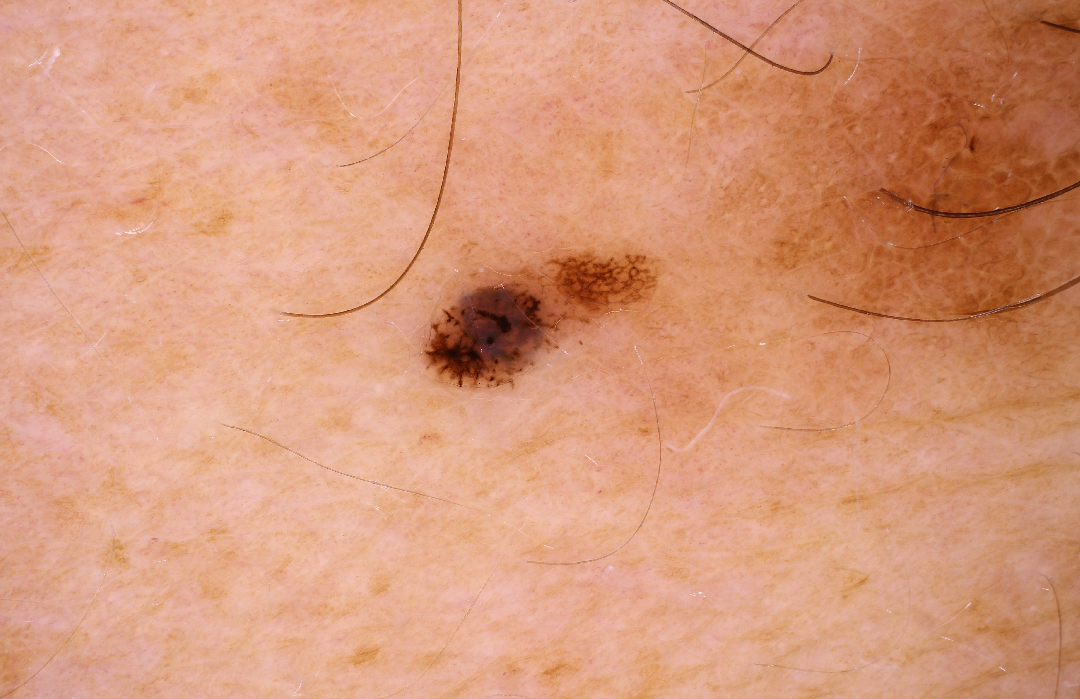Melanoma is a cancer that arises in pigment cells of the skin (melanocytes). If not detected early, it has the capacity to spread through blood vessels and lymph channels to other parts of the body.

Dermoscopic image of a melanoma
In Australia, melanoma is the third most commonly diagnosed cancer in both men and women, and the most common cancer in Australians aged 15-39 years. The incidence of melanoma in Australia continues to increase, and currently more than 12,500 Australians are affected each year, with the highest rates in Queensland, the ‘Melanoma Capital of the World’.
Detecting melanoma early is important for melanoma outcomes: early diagnosis and intervention have been shown to have the potential to offer significant benefits to both melanoma survival rates and health system costs. This is emphasised by strong evidence that survival worsens with increasing melanoma thickness at diagnosis, and that the detection of melanoma at an early stage improves treatment outcomes. However, early diagnosis of melanoma is difficult for clinicians, especially for patients presenting with many moles.
Researchers at QIMR Berghofer Medical Research Institute have developed an online test for people aged 40 and over to predict their risk of developing melanoma.
Melanoma Risk Predictor
Research highlights
Research into melanoma includes:
- Pattern of care, outcomes – Professor Mark Smithers (UQ), Professor Andrew Barbour (UQ)
- Early diagnosis – Professor H. Peter Soyer (UQ)
- Melanoma biology and treatment resistance – Associate Professor Helmut Schaider (UQ)
- Genomics, molecular pathways – Dr Mitchell Stark (UQ)
- Genetic susceptibility, functional analysis MC1R, IRF4, MITF – Associate Professor Rick Sturm (UQ)
- Cell cycle, heterogeneity – Professor Nikolas Haass (UQ)
- Cell cycle – Professor Brian Gabrielli (Mater)




